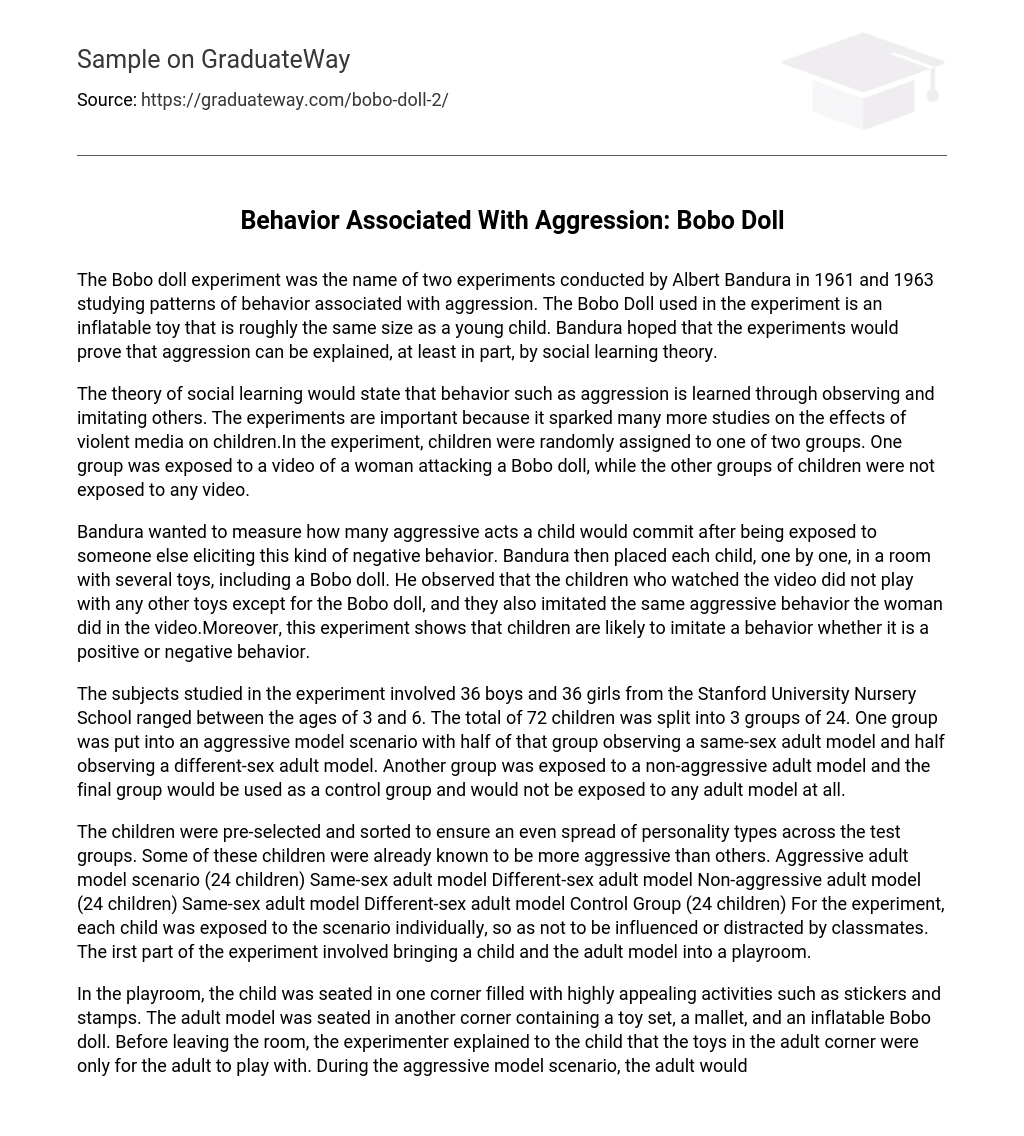Albert Bandura conducted two experiments, referred to as the Bobo doll experiments, in 1961 and 1963. These experiments were designed to investigate patterns of aggressive behavior and their correlation with the Bobo Doll – an inflatable toy that closely resembled a young child in size. The primary objective of Bandura’s research was to illustrate how social learning theory could partially explain aggression by conducting these specific experiments.
The theory of social learning suggests that aggression, among other behaviors, is acquired by observing and imitating others. The experiments mentioned here are significant as they prompted further investigations into the impact of violent media on children. In the conducted experiment, children were divided into two groups randomly. One group was shown a video where a woman aggressed a Bobo doll, while the other group of children was not exposed to any video.
Bandura conducted a study to assess the number of aggressive acts performed by children after observing negative behavior. To conduct the study, Bandura isolated each child in a room with various toys, including a Bobo doll. It was observed that children who watched a video exclusively played with the Bobo doll and replicated the aggressive actions demonstrated by the woman in the video. The experiment further demonstrates that children tend to imitate behaviors, irrespective of their nature being positive or negative.
The experiment involved 72 children, aged 3 to 6, from the Stanford University Nursery School. The gender distribution was equal, with 36 boys and 36 girls. The children were split into three groups of 24 each. One group observed an aggressive model scenario with a same-sex adult model, while the other half observed a different-sex adult model. Another group was exposed to a non-aggressive adult model, and the final group served as a control with no exposure to an adult model.
The children were selected and organized into specific groups to ensure a fair representation of diverse personality types. Some children were already identified as more aggressive than others. Each test group comprised 24 children and was exposed to various adult model scenarios, such as aggressive adult models (same-sex and different-sex), non-aggressive adult models (same-sex and different-sex), and a control group. To remove any influence or distractions from peers, each child experienced the scenario individually. The first stage of the experiment involved bringing a child and an adult model together in a playroom.
The child was seated in the playroom, surrounded by exciting activities like stickers and stamps. Meanwhile, the adult model occupied another corner with a toy set, a mallet, and an inflatable Bobo doll. The experimenter then informed the child that the toys in the adult corner were exclusively for the adult’s enjoyment before leaving the room. In the aggressive model scenario, the adult would commence playing with the toys for about one minute.
Once this time period had passed, the adult began displaying aggression towards the Bobo doll, such as hitting it and using a toy mallet to strike its face. After approximately 10 minutes, the experimenter reentered the room, sent the aggressive adult model away, and brought the child to another playroom. The non-aggressive adult model, however, engaged in play with small toys for the entire duration of the 10 minutes.
In the beginning of the experiment, the model paid no attention to the Bobo doll when the child was in the room. Afterwards, both the child and experimenter were relocated to a different room that had different toys like a truck, dolls, and a spinning top that grabbed their interest. The child was encouraged to play with these toys. Nevertheless, after around 2 minutes, the experimenter decided to interrupt the child’s playtime with the toys.
The experiment aimed to induce frustration in the child by offering a variety of toys, including both aggressive and non-aggressive options. The experimenter closely observed the child’s play for 20 minutes, with particular attention to physical aggression during the initial assessment.
This consisted of physical aggression towards the Bobo doll, such as punching, kicking, sitting on it, hitting it with a mallet, and tossing it. Another measure was verbal aggression, where the judges noted how often the children imitated the aggressive behavior they observed from the adult model. The final measure was the frequency of using the mallet to demonstrate forms of aggression other than hitting the doll.
The final measure includes child aggression that did not directly imitate the behavior of the role-model.





